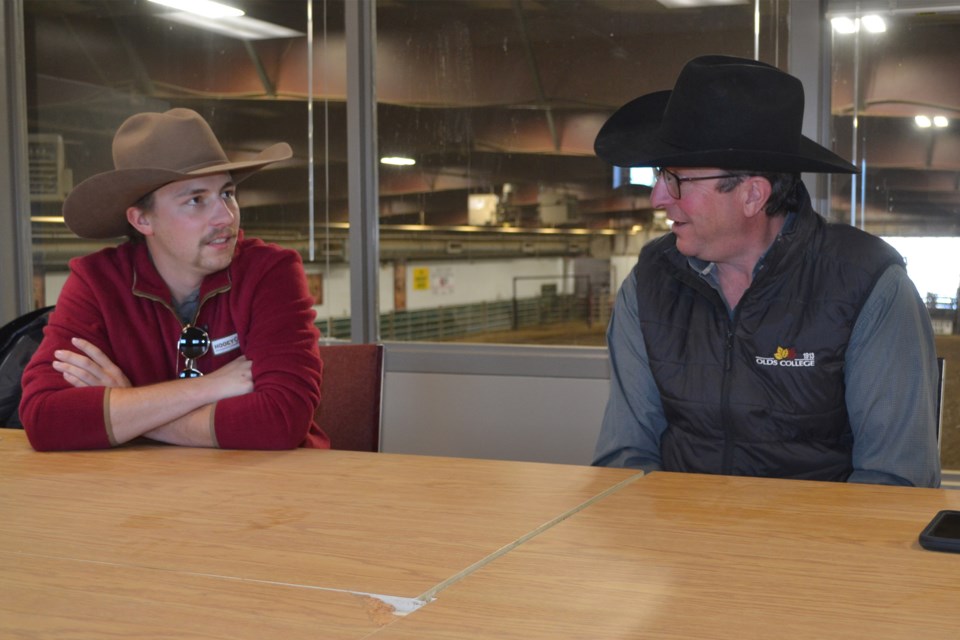OLDS — It’s not a very traditional look, but Olds College rodeo team head coach Guy Kelley says more and more rodeo competitors are wearing helmets and flak jackets so they compete another day.
He says it especially makes sense in roughstock events like bullriding.
“I think it’s very smart," Kelley said during an interview. “I grew up rodeoing in high school in the ‘80s and semi-professional and professional in the ‘90s and it was just kind of getting on.
“But I mean I saw lots of my friends get severely injured and some killed, right? So you know, if they would have had a helmet or had the vest, there’s quite a few of them would (still) be around here to this day.”
Kelley says that change took a while to occur, but he’s seeing more and more guys wearing helmets and/or flak jackets when they compete.
“I grew up in that era where I saw the change and I mean there was a lot of resistance between the old guys, you know, the cowboys. ‘You’ve got to be tough’ and ‘you’ve got to take the odd knock’ or whatever,” he said.
"At first there was some resistance, but once one professional or somebody that somebody looked up to was wearing it then the younger kids came on and thought, ‘well, you know, if the professionals are wearing it, then I’ll do it too.’”
The almighty dollar is a factor, in addition to safety, Kelley indicated.
"There’s so much money in bullriding now that if you get off and you get a horn to the head and you have a helmet on, you’re not hurt or injured and able to compete the next day, right?
“Where before, I mean, it might have taken them out for two or three weeks, right? So it’s definitely helped for sure.”
Kelley, who competed in tie-down roping and team roping before becoming a rodeo coach, doesn’t expect competitors to wear helmets in those events because he says it’s not the same as bullriding.
Olds College Broncos bullfighter Sam Schellenberg is seeing the change too.
He said when he began competing a few years ago, there was still a fair bit of resistance to wearing helmets, especially among Brazilian riders at the professional level.
But he’s already seeing that resistance dissipate.
"As the animals continue to get better and tougher and harder to ride and more dangerous, the riders will continue to adopt that helmet. I think it’s been a very welcomed adoption,” Schellenberg said.



